JOSEF HOFFMANN* (Pirnitz 1870 - 1956 Wien) Grüne Vase Tinte und Aquarell/Papier, 26,5 x 21 cm monogrammiert JH verso beschriftet 600 und gestempelt ATELIER OB. BAUR. PROF. ARCH. DR. h.c. JOSEF HOFFMANN Provenienz: Carla Hoffmann, Privatbesitz Wien SCHÄTZPREIS: °€ 500 - 1.000 Österreichischer Architekt, Innenarchitekt, Kunsthandwerker und Designer. Gilt neben Otto Wagner und Adolf Loos als bedeutendster Architekt des 20. Jahrhunderts in Österreich. Studierte an der Akademie der bildenden Künste Architektur bei Otto Wagner 1895 mit Josef Maria Olbrich, Carl Otto Czeschka Koloman Moser und Leo Kainradl Mitglied im Siebener-Club. Gründete 1987 mit Gustav Klimt Koloman Moser Josef Maria Olbrich, Maximilian Kurzweil, Josef Engelhart Ernst Stöhr Wilhelm List Adolf Hölzel als Abspaltung vom Künstlerhaus die Wiener Secession. 1899 bis 1936 Professor an der Wiener Kunstgewerbeschule. Gründete 1903 mit Kolo Moser die Wiener Werkstätte. 1912 Gründungsmitglied des Wiener Werkbundes. Gestaltete viele Ausstellungen, Mitbegründer der Kunstschau. Anfangs vom französischen Art Noveau geprägt, später Einflüsse vom schottischen Architekten Mackintosh und dem britischen Arts and Crafts Movement. Interesse an der Umsetzung von Raumkunst und der Idee des Gesamtkunstwerks. Architektonische Entwürfe für u.a. Sanatorium Purkersdorf 1903, Palais Stoclet in Brüssel 1905-1911, Innenausstattung Kabarett Fledermaus 1909, Villa Skywa-Primavesi 1913-1915, Österreich Pavillon für Kölner Werkbundsiedlung 1914, Österreich Pavillon Kunstgewerbeausstellung in Paris 1925. Schuf auch Entwürfe für Innenausstattungen, Möbel, Tische, Stühle, Kästen, Vitrinen, Stoffe, Geschirr, Besteck, Lampen, Luster, Vasen, Dekorationen usw. Der Architekt, Designer, Lehrer und Ausstellungsmacher Josef Hoffmann (1870–1956) zählt zu den zentralen Figuren der Wiener Moderne und internationalen Lebensreformbewegung um 1900 und zu den bedeutendsten österreichischen Architekten überhaupt. Sein Schaffen, das sechs Jahrzehnte umfasst, wurde mit zahlreichen in- und ausländischen Auszeichnungen geehrt. Josef Hoffmann kam als Josef Franz Maria Hoffmann in Pirnitz auf die Welt und wuchs in einer wohlsituierten Familie auf. Der Vater Josef Hoffmann war Bürgermeister und Miteigentümer einer Textilmanufaktur; die Mutter Leopoldine Hoffmann, geborene Tuppy, führte den kinderreichen Haushalt. Josef war der einzige Sohn; er wuchs mit drei Schwestern auf, zwei weitere Geschwister waren kurz nach der Geburt gestorben. Nach dem Gymnasium in Iglau (1879–1886) besuchte er die Höhere Staatsgewerbeschule in Brünn (1887–1891), es folgte eine einjährige Tätigkeit im Militärbauamt in Würzburg. 1892 kam er nach Wien, wo er Schüler Carl von Hasenauers an der Akademie der bildenden Künste wurde und ab 1894 bei Otto Wagner Architektur studierte. Im Anschluss an sein Diplom (Juli 1895) reiste er mit einem Reisestipendium (Rompreis) nach Italien. Aus Capri nach Wien zurückgekehrt, trat Hoffmann 1896/1897 in das Atelier Wagners ein. Ab 1898 war er als eigenständiger Architekt und Designer tätig. Bereits 1895 mit Josef Maria Olbrich, Kolo Moser, C. O. Czeschka und Leo Mitglied des "Siebener-Clubs", zählte Hoffmann zu den Mitbegründern der Wiener Secession, deren Mitglied er ab dem 21. Juli 1897 war. 1905 verließ er die Wiener Secession mit der sogenannten „Klimt-Gruppe“. 1938/1939 und von 1945 bis 1956 war Hoffmann neuerlich Secessions-Mitglied und stand der Vereinigung von 1948 bis 1950 als Präsident vor. Von 1899 bis 1936 war Hoffmann Professor an der Wiener Kunstgewerbeschule (Fachklasse für Architektur). Nach seiner (unfreiwilligen) Emeritierung erhielt er Lehraufträge an der Universität für angewandte Kunst (1937) und der Akademie der bildenden Künste (1946–1947). Am 1. Mai 1903 gründete er zudem gemeinsam mit Kolo Moser und mit Förderung des Bankiers Fritz Waerndorfer, für den Hoffmann 1903/1904 dessen Villa in der Weimarer Straße 45 umbaute, die Wiener Werkstätte. Weiters war Josef Hoffmann 1912 Gründungsm
JOSEF HOFFMANN* (Pirnitz 1870 - 1956 Vienna) Green Vase ink and watercolor/paper, 26,5 x 21 cm monogrammed JH, verso inscribed 600 and stamped ATELIER OB. BAUR. PROF. ARCH. DR. h.c. JOSEF HOFFMANN Provenance: Carla Hoffmann, private property Vienna ESTIMATE °€ 500 - 1.000 Austrian architect, interior designer, craftsman and designer. Along with Otto Wagner and Adolf Loos is considered the most important architect of the 20th century in Austria. Studied architecture at the Academy of Fine Arts under Otto Wagner In 1895, with Josef Maria Olbrich, Carl Otto Czeschka Koloman Moser and Leo Kainradl, member of the Club of Seven. Founded the Vienna Secession in 1987 with Gustav Klimt Koloman Moser Josef Maria Olbrich, Maximilian Kurzweil, Josef Engelhart Ernst Stöhr Wilhelm List Adolf Hölzel as a split from the Künstlerhaus. 1899 to 1936 professor at the Vienna School of Applied Arts. Founded the Wiener Werkstätte with Kolo Moser in 1903. 1912 founding member of the Wiener Werkbund. Designed many exhibitions, co-founder of the Kunstschau. Initially influenced by French Art Noveau, later influenced by Scottish architect Mackintosh and the British Arts and Crafts Movement. Interested in the implementation of spatial art and the idea of the Gesamtkunstwerk. Architectural designs for, among others, Sanatorium Purkersdorf 1903, Palais Stoclet in Brussels 1905-1911, interior design Cabaret Fledermaus 1909, Villa Skywa-Primavesi 1913-1915, Austria Pavilion for Cologne Werkbundsiedlung 1914, Austria Pavilion Arts and Crafts Exhibition in Paris 1925. Also created designs for interiors, furniture, tables, chairs, boxes, display cases, fabrics, tableware, cutlery, lamps, chandeliers, vases, decorations, etc. The architect, designer, teacher and exhibition organizer Josef Hoffmann (1870-1956) is one of the central figures of Viennese Modernism and the international life reform movement around 1900. He is one of the most important Austrian architects of all. His work, which spans six decades, has been honored with numerous national and international awards. Josef Hoffmann was born as Josef Franz Maria Hoffmann in Pirnitz and grew up in a well-to-do family. The father Josef Hoffmann was mayor and co-owner of a textile factory; the mother Leopoldine Hoffmann, née Tuppy, ran the household with many children. Joseph was the only son; he grew up with three sisters, two other siblings had died shortly after birth. After high school in Iglau (1879-1886) he attended the higher state trade school in Brno (1887-1891), followed by a year's work in the military construction office in Würzburg. In 1892 he came to Vienna, where he became a student of Carl von Hasenauer at the Academy of Fine Arts and from 1894 studied architecture with Otto Wagner After his diploma (July 1895) he traveled to Italy with a travel grant (Rome Prize). Returning to Vienna from Capri, Hoffmann entered Wagner's studio in 1896/1897. From 1898 he worked as an independent architect and designer. As early as 1895, Hoffmann was a member of the "Club of Seven" along with Josef Maria Olbrich, Koloman Moser (Kolo Moser), C.O. Czeschka and Leo. In 1905 he left the Vienna Secession with the so-called "Klimt Group". In 1938/1939 and from 1945 to 1956 Hoffmann was again a member of the Secession and was the association's president from 1948 to 1950. From 1899 to 1936 Hoffmann was a professor at the Vienna School of Applied Arts (class for architecture). After his (involuntary) retirement, he received a teaching positions at the University of Applied Arts (1937) and the Academy of Fine Arts (1946-1947). On May 1, 1903, he also founded the Wiener Werkstätte together with Kolo Moser and with the support of the banker Fritz Waerndorfer, for whom Hoffmann remodeled his villa at Weimarer Strasse 45 in 1903/1904. In addition, Josef Hoffmann was a founding member of the Austrian Werkbund in 1912. From 1903 to 1922 Hoffmann was married to Anna Hladik. Their son Wolfgang, with whom he had a diffi
JOSEF HOFFMANN* (Pirnitz 1870 - 1956 Wien) Grüne Vase Tinte und Aquarell/Papier, 26,5 x 21 cm monogrammiert JH verso beschriftet 600 und gestempelt ATELIER OB. BAUR. PROF. ARCH. DR. h.c. JOSEF HOFFMANN Provenienz: Carla Hoffmann, Privatbesitz Wien SCHÄTZPREIS: °€ 500 - 1.000 Österreichischer Architekt, Innenarchitekt, Kunsthandwerker und Designer. Gilt neben Otto Wagner und Adolf Loos als bedeutendster Architekt des 20. Jahrhunderts in Österreich. Studierte an der Akademie der bildenden Künste Architektur bei Otto Wagner 1895 mit Josef Maria Olbrich, Carl Otto Czeschka Koloman Moser und Leo Kainradl Mitglied im Siebener-Club. Gründete 1987 mit Gustav Klimt Koloman Moser Josef Maria Olbrich, Maximilian Kurzweil, Josef Engelhart Ernst Stöhr Wilhelm List Adolf Hölzel als Abspaltung vom Künstlerhaus die Wiener Secession. 1899 bis 1936 Professor an der Wiener Kunstgewerbeschule. Gründete 1903 mit Kolo Moser die Wiener Werkstätte. 1912 Gründungsmitglied des Wiener Werkbundes. Gestaltete viele Ausstellungen, Mitbegründer der Kunstschau. Anfangs vom französischen Art Noveau geprägt, später Einflüsse vom schottischen Architekten Mackintosh und dem britischen Arts and Crafts Movement. Interesse an der Umsetzung von Raumkunst und der Idee des Gesamtkunstwerks. Architektonische Entwürfe für u.a. Sanatorium Purkersdorf 1903, Palais Stoclet in Brüssel 1905-1911, Innenausstattung Kabarett Fledermaus 1909, Villa Skywa-Primavesi 1913-1915, Österreich Pavillon für Kölner Werkbundsiedlung 1914, Österreich Pavillon Kunstgewerbeausstellung in Paris 1925. Schuf auch Entwürfe für Innenausstattungen, Möbel, Tische, Stühle, Kästen, Vitrinen, Stoffe, Geschirr, Besteck, Lampen, Luster, Vasen, Dekorationen usw. Der Architekt, Designer, Lehrer und Ausstellungsmacher Josef Hoffmann (1870–1956) zählt zu den zentralen Figuren der Wiener Moderne und internationalen Lebensreformbewegung um 1900 und zu den bedeutendsten österreichischen Architekten überhaupt. Sein Schaffen, das sechs Jahrzehnte umfasst, wurde mit zahlreichen in- und ausländischen Auszeichnungen geehrt. Josef Hoffmann kam als Josef Franz Maria Hoffmann in Pirnitz auf die Welt und wuchs in einer wohlsituierten Familie auf. Der Vater Josef Hoffmann war Bürgermeister und Miteigentümer einer Textilmanufaktur; die Mutter Leopoldine Hoffmann, geborene Tuppy, führte den kinderreichen Haushalt. Josef war der einzige Sohn; er wuchs mit drei Schwestern auf, zwei weitere Geschwister waren kurz nach der Geburt gestorben. Nach dem Gymnasium in Iglau (1879–1886) besuchte er die Höhere Staatsgewerbeschule in Brünn (1887–1891), es folgte eine einjährige Tätigkeit im Militärbauamt in Würzburg. 1892 kam er nach Wien, wo er Schüler Carl von Hasenauers an der Akademie der bildenden Künste wurde und ab 1894 bei Otto Wagner Architektur studierte. Im Anschluss an sein Diplom (Juli 1895) reiste er mit einem Reisestipendium (Rompreis) nach Italien. Aus Capri nach Wien zurückgekehrt, trat Hoffmann 1896/1897 in das Atelier Wagners ein. Ab 1898 war er als eigenständiger Architekt und Designer tätig. Bereits 1895 mit Josef Maria Olbrich, Kolo Moser, C. O. Czeschka und Leo Mitglied des "Siebener-Clubs", zählte Hoffmann zu den Mitbegründern der Wiener Secession, deren Mitglied er ab dem 21. Juli 1897 war. 1905 verließ er die Wiener Secession mit der sogenannten „Klimt-Gruppe“. 1938/1939 und von 1945 bis 1956 war Hoffmann neuerlich Secessions-Mitglied und stand der Vereinigung von 1948 bis 1950 als Präsident vor. Von 1899 bis 1936 war Hoffmann Professor an der Wiener Kunstgewerbeschule (Fachklasse für Architektur). Nach seiner (unfreiwilligen) Emeritierung erhielt er Lehraufträge an der Universität für angewandte Kunst (1937) und der Akademie der bildenden Künste (1946–1947). Am 1. Mai 1903 gründete er zudem gemeinsam mit Kolo Moser und mit Förderung des Bankiers Fritz Waerndorfer, für den Hoffmann 1903/1904 dessen Villa in der Weimarer Straße 45 umbaute, die Wiener Werkstätte. Weiters war Josef Hoffmann 1912 Gründungsm
JOSEF HOFFMANN* (Pirnitz 1870 - 1956 Vienna) Green Vase ink and watercolor/paper, 26,5 x 21 cm monogrammed JH, verso inscribed 600 and stamped ATELIER OB. BAUR. PROF. ARCH. DR. h.c. JOSEF HOFFMANN Provenance: Carla Hoffmann, private property Vienna ESTIMATE °€ 500 - 1.000 Austrian architect, interior designer, craftsman and designer. Along with Otto Wagner and Adolf Loos is considered the most important architect of the 20th century in Austria. Studied architecture at the Academy of Fine Arts under Otto Wagner In 1895, with Josef Maria Olbrich, Carl Otto Czeschka Koloman Moser and Leo Kainradl, member of the Club of Seven. Founded the Vienna Secession in 1987 with Gustav Klimt Koloman Moser Josef Maria Olbrich, Maximilian Kurzweil, Josef Engelhart Ernst Stöhr Wilhelm List Adolf Hölzel as a split from the Künstlerhaus. 1899 to 1936 professor at the Vienna School of Applied Arts. Founded the Wiener Werkstätte with Kolo Moser in 1903. 1912 founding member of the Wiener Werkbund. Designed many exhibitions, co-founder of the Kunstschau. Initially influenced by French Art Noveau, later influenced by Scottish architect Mackintosh and the British Arts and Crafts Movement. Interested in the implementation of spatial art and the idea of the Gesamtkunstwerk. Architectural designs for, among others, Sanatorium Purkersdorf 1903, Palais Stoclet in Brussels 1905-1911, interior design Cabaret Fledermaus 1909, Villa Skywa-Primavesi 1913-1915, Austria Pavilion for Cologne Werkbundsiedlung 1914, Austria Pavilion Arts and Crafts Exhibition in Paris 1925. Also created designs for interiors, furniture, tables, chairs, boxes, display cases, fabrics, tableware, cutlery, lamps, chandeliers, vases, decorations, etc. The architect, designer, teacher and exhibition organizer Josef Hoffmann (1870-1956) is one of the central figures of Viennese Modernism and the international life reform movement around 1900. He is one of the most important Austrian architects of all. His work, which spans six decades, has been honored with numerous national and international awards. Josef Hoffmann was born as Josef Franz Maria Hoffmann in Pirnitz and grew up in a well-to-do family. The father Josef Hoffmann was mayor and co-owner of a textile factory; the mother Leopoldine Hoffmann, née Tuppy, ran the household with many children. Joseph was the only son; he grew up with three sisters, two other siblings had died shortly after birth. After high school in Iglau (1879-1886) he attended the higher state trade school in Brno (1887-1891), followed by a year's work in the military construction office in Würzburg. In 1892 he came to Vienna, where he became a student of Carl von Hasenauer at the Academy of Fine Arts and from 1894 studied architecture with Otto Wagner After his diploma (July 1895) he traveled to Italy with a travel grant (Rome Prize). Returning to Vienna from Capri, Hoffmann entered Wagner's studio in 1896/1897. From 1898 he worked as an independent architect and designer. As early as 1895, Hoffmann was a member of the "Club of Seven" along with Josef Maria Olbrich, Koloman Moser (Kolo Moser), C.O. Czeschka and Leo. In 1905 he left the Vienna Secession with the so-called "Klimt Group". In 1938/1939 and from 1945 to 1956 Hoffmann was again a member of the Secession and was the association's president from 1948 to 1950. From 1899 to 1936 Hoffmann was a professor at the Vienna School of Applied Arts (class for architecture). After his (involuntary) retirement, he received a teaching positions at the University of Applied Arts (1937) and the Academy of Fine Arts (1946-1947). On May 1, 1903, he also founded the Wiener Werkstätte together with Kolo Moser and with the support of the banker Fritz Waerndorfer, for whom Hoffmann remodeled his villa at Weimarer Strasse 45 in 1903/1904. In addition, Josef Hoffmann was a founding member of the Austrian Werkbund in 1912. From 1903 to 1922 Hoffmann was married to Anna Hladik. Their son Wolfgang, with whom he had a diffi
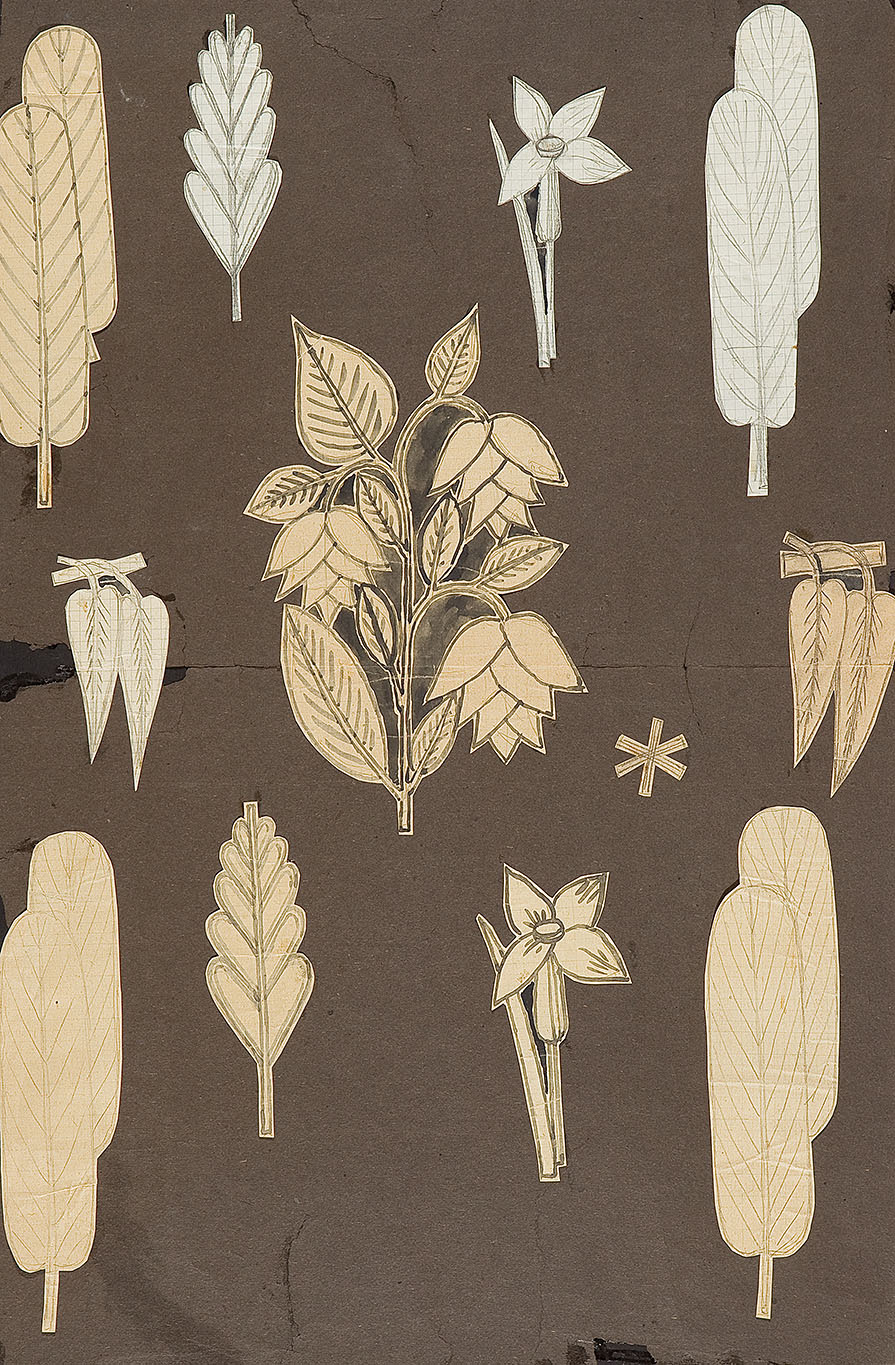

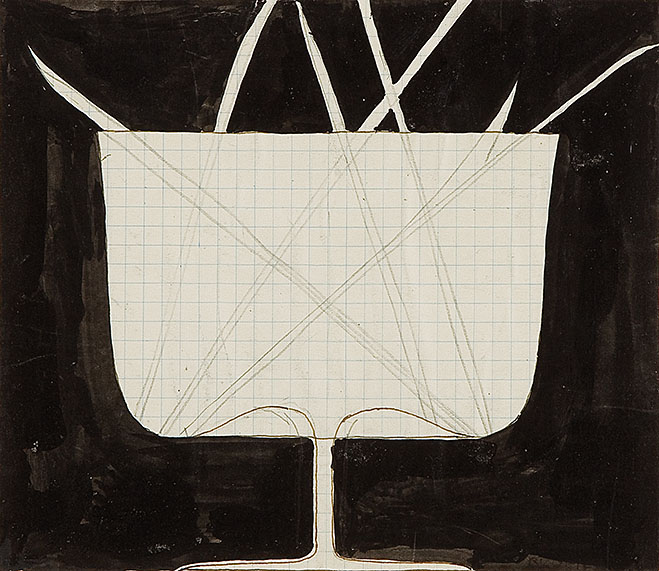
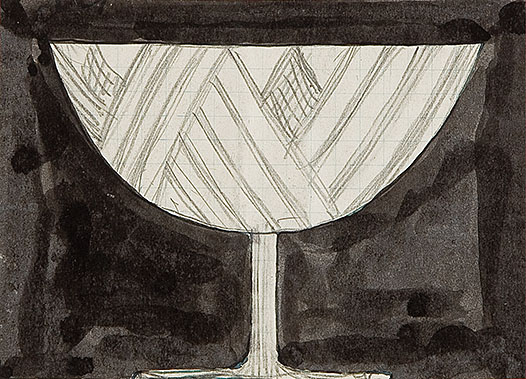
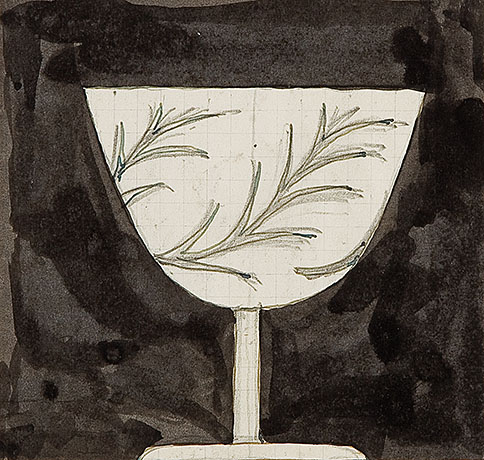
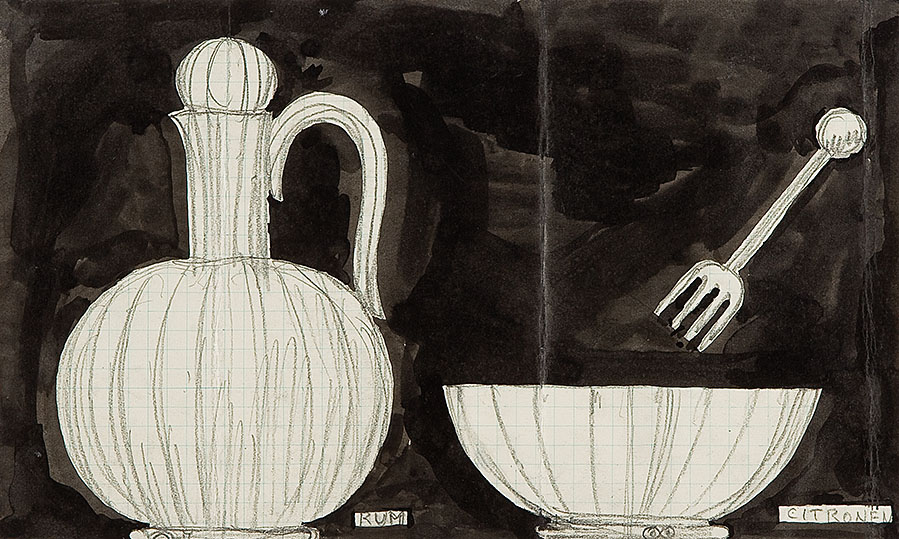
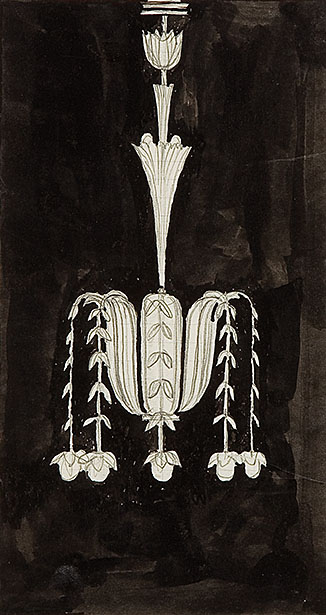
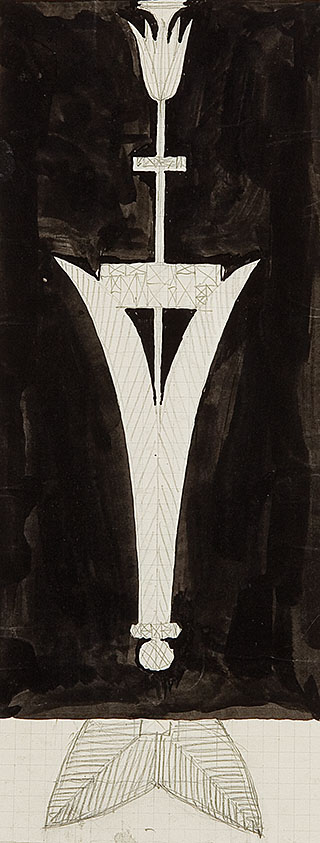
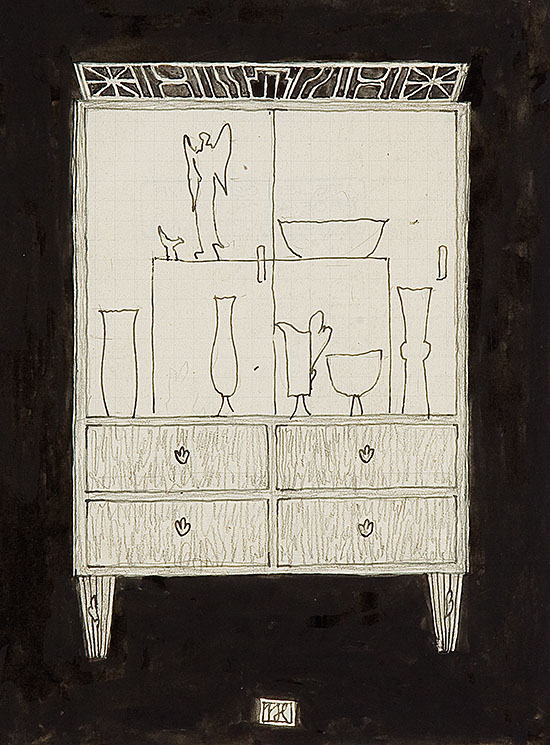

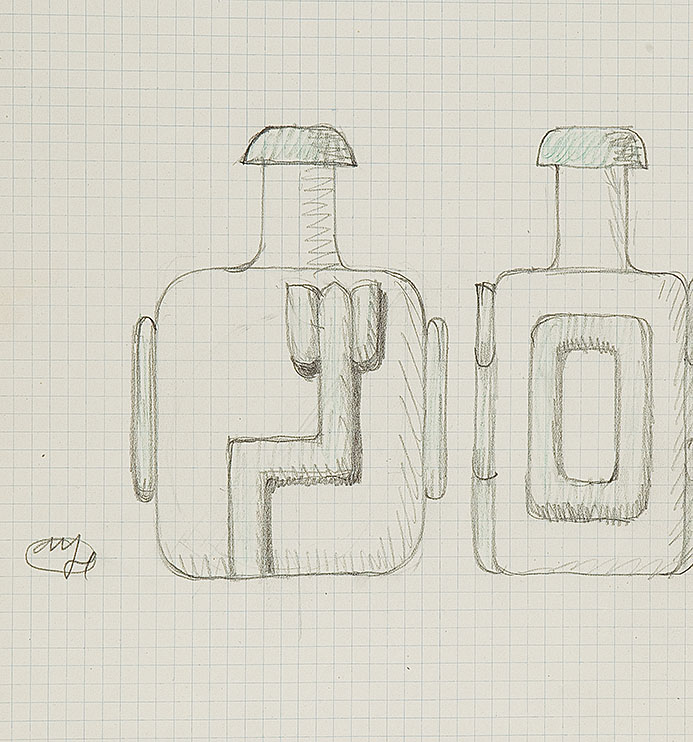
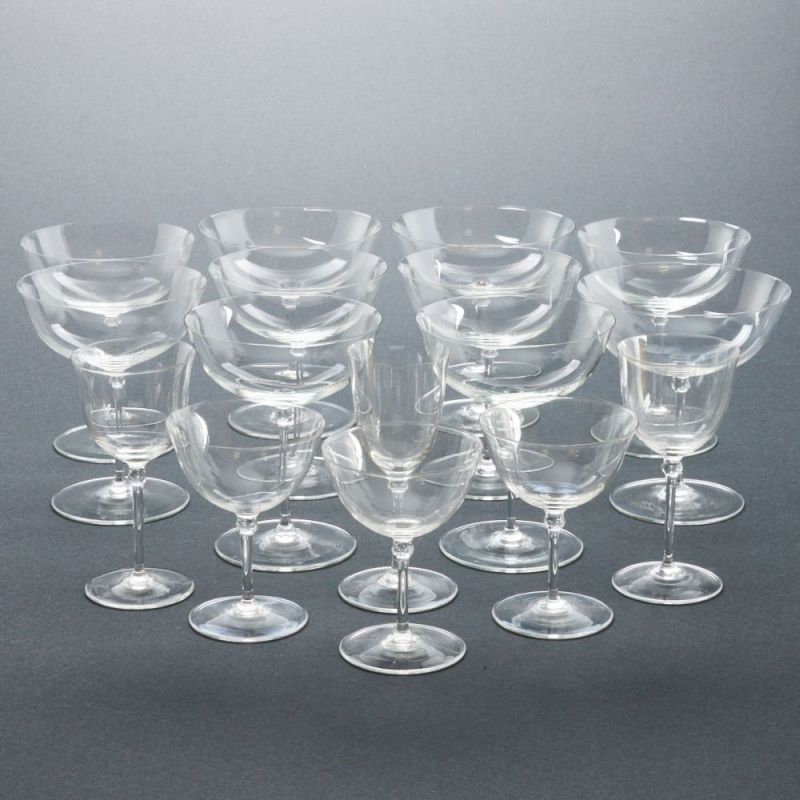



Try LotSearch and its premium features for 7 days - without any costs!
Be notified automatically about new items in upcoming auctions.
Create an alert